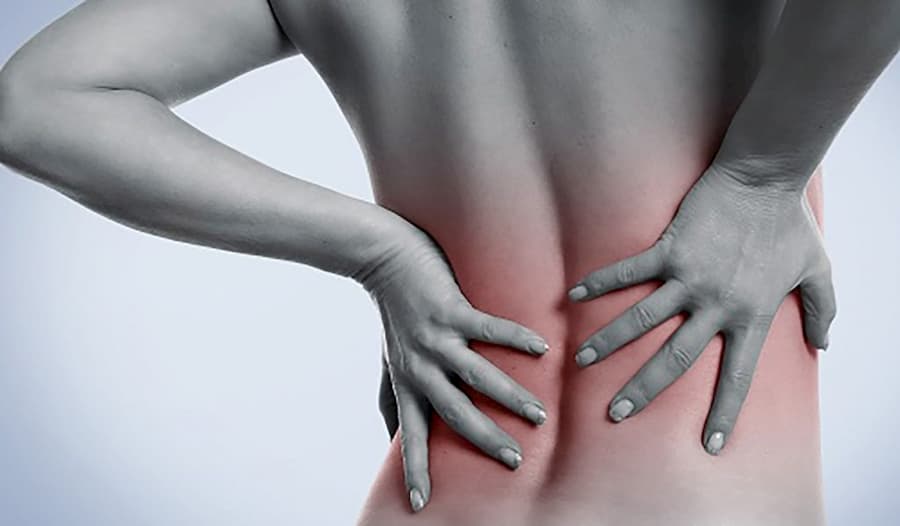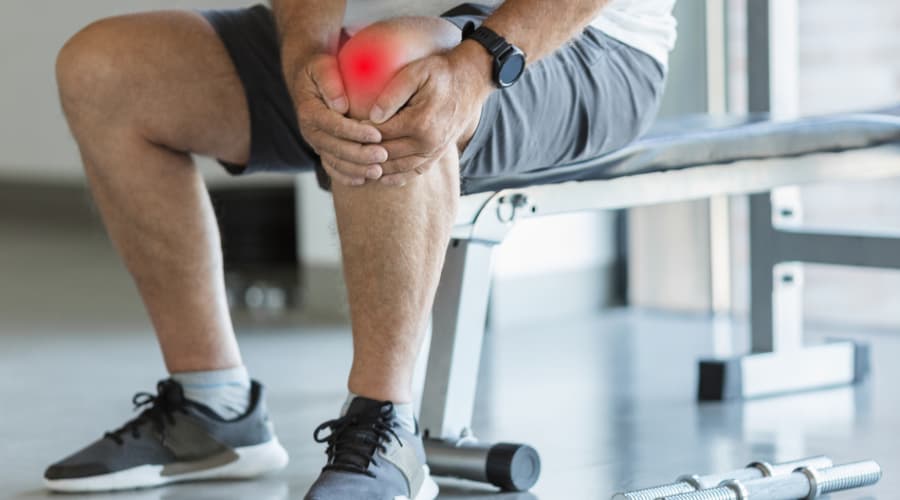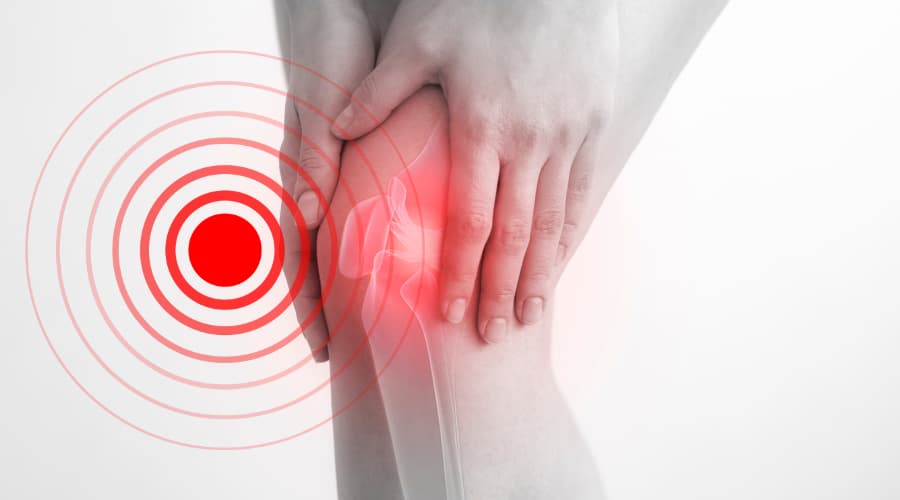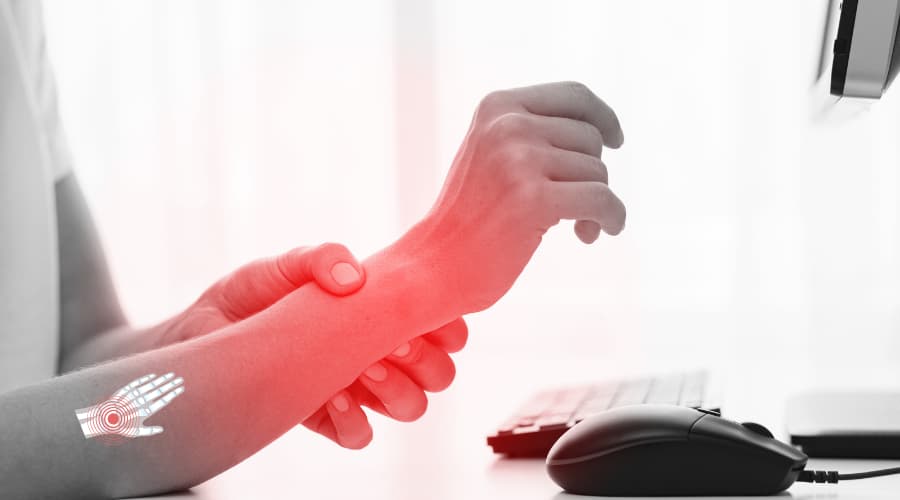What is Shockwave Therapy?
Shockwave therapy is one of the more recent noninvasive treatments available to practitioners of orthopedic, rehabilitative and many other fields of medicine. Shockwave therapy directs high-energy acoustic waves toward injured or painful areas to elicit healing. This therapy causes beneficial micro-injuries in the affected area, stimulates blood flow and promotes tissue healing.
A Brief History of Shockwave Therapy
The biological impact of shockwaves on human tissue was first noticed during World War II when a group of beach swimmers suffered unexplained lung injuries. Though these swimmers had sustained internal pulmonary injuries, they exhibited no signs of external trauma. This novelty led researchers to discover that the source of the swimmers’ injuries was deep-sea depth charges that the military had detonated in nearby offshore waters. The discovery that these acoustic shockwaves could have such a pronounced biological impact on internal human tissue piqued the interest of numerous medical investigators. Modern shockwave therapies can trace their roots back to these early scientific explorations.
During the early 1990’s, a non-invasive method of shattering kidney stones with focused acoustic shockwaves, known as lithotripsy, was developed. This novel technique deployed a hand-held, high-powered shockwave device to disintegrate kidney stones, eliminating the need for patients to undergo invasive and potentially dangerous surgery. Today, 98 percent of kidney stones are still successfully treated using lithotripsy.
Some of early applications of shockwave therapy also involved the treatment of deep tendon pain. Shockwave therapies are increasingly used today in the noninvasive treatment of myofascial and skeletal pain/injuries.
What Conditions Does Shockwave Therapy Treat?
The therapeutic applications for shockwave therapies are numerous and constantly increasing. Currently, shockwave therapy is used in the treatment of numerous medical conditions, injuries and related pain syndromes:
- plantar fasciitis
- heel spurs
- achilles tendonpathy
- tennis and golfer’s elbow
- basilar joint arthritis
- bursitis
- shoulder impingement syndromes
- shin splints
- chronic inflammation syndromes
- stress fractures
- osteoarthritis
- Morton’s neuroma
More recently, shockwave therapies have even been employed to effectively treat male erectile dysfunctions.
Types of Shockwave Therapy
Shockwave treatments are divided into two categories:
- focus shockwave therapy
- radial shockwave therapy
Though the therapeutic effects of focus and radial shockwave therapies are similar, they are used to treat different types of tissues. The two therapies differ in how the shockwaves behave during the treatment procedure. Each of these treatments are unique in the range of damaged tissues that can be targeted during a single procedure.
Focus Shockwave Therapy
Focus shockwave therapy directs powerful acoustic waves to the desired treatment area with an external device. This treatment’s acoustic shockwaves are capable of reaching the deepest tissues and organs. However, focus shockwaves are limited in their treatment radius. For this reason, focus shockwave therapy targets small, isolated areas of injured tissue. Because of its narrow treatment range, focus shockwave therapy is typically reserved for the treatment of isolated, deep-tissue injuries. Because delivering focus shockwaves relies on an external device, the practitioner must rely on medical imaging equipment such as x-ray or ultrasound to successfully direct the therapeutic shockwaves to a precise treatment area. Focus shockwave therapy also requires the use of anaesthesia during the treatment procedure. Substantial analgesic medications are often required both during and after focus shockwave procedures. For these reasons, focus shockwave therapy is usually reserved for accessing deep tissues, organs and muscle/tendon insertion points.
Because the treatment zone of focus shockwave therapy is so small, the tissue area that can be treated in a single procedure is also tiny. Despite focus shock therapy’s drawbacks, until the year 2000, it was the only mode of shockwave therapy readily available to both patients and practitioners.
Radial Shockwave Therapy
The new millennium ushered in a new and safer mode of shockwave therapy treatment known as Radial Shockwave Therapy. This treatment mode is often referred to as focus shockwave therapy’s kindler, gentler cousin. Some practitioners will refer to this treatment mode as “soft wave” therapy.
Injuries do not occur in a vacuum. Often surrounding tissues are also sustain reactionary damage. The advent of radial shockwave therapy allowed practitioners to treat both the painful area’s site of origin and a much broader zone of potentially affected surrounding tissue.
Radial Shockwave Therapy has been available in Europe since the mid-1980s, but the high cost of treatment equipment made the method cost-prohibitive for many otherwise interested practitioners. As more providers began to recognise how valuable radial shockwave therapy was to their pain-stricken patients, radial shockwave therapy became more widely available. Today, radial shockwaves treatments are used in the practices of orthopaedic medicine, sports medicine, rehabilitative medicine, urogenital medicine and chiropractic clinics. The therapy also enjoys numerous applications in veterinary medicine.
Our Clinic’s Experience With Radial Shock Therapy
At our Tunbridge Wells clinic, we offer our patients radial shock therapy for one reason—it works. We will often recommended radial shock treatments for patients who have experienced tissue damage, related chronic pain or inflammation. Many of our most satisfied radial shock therapy patients came to us after having tried more traditional treatment methods and having enjoyed little to no clinical benefit.
Following their radial shock therapy procedures, many of our patients report that they have experienced immediate and substantial pain relief. Some patients have even reported having experienced immediate range of motion improvements.
Our experience is that most radial shock therapy patients will experience minimal treatment side effects, but some discomfort both during and after the procedure is possible. After treatment, it’s possible that you could experience skin reddening and/or bruising at or near the treatment site. Over-the-counter analgesics are usually sufficient to treat any post-treatment side effects. If you are feeling concerned by any of these post-treatment conditions or have other treatment-related concerns, please don’t hesitate to contact us.
If you or a loved one are experiencing a troublesome injury or chronic pain, radial shockwave therapy might be a good option for you to explore.
Related Articles
- Treatment of Plantar Fasciitis using Shockwave Therapy
- Shockwave Therapy FAQs
- Managing your Back Pain
- Osteoarthritis and Arthritis, Similar But Very Different
- Deep Tissue Massage & Sports Massage Information




